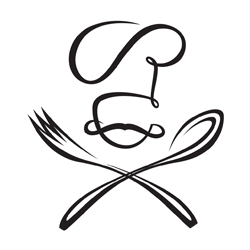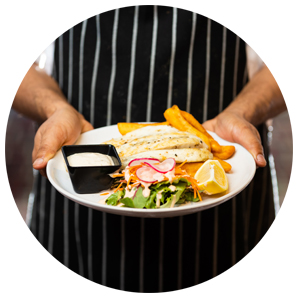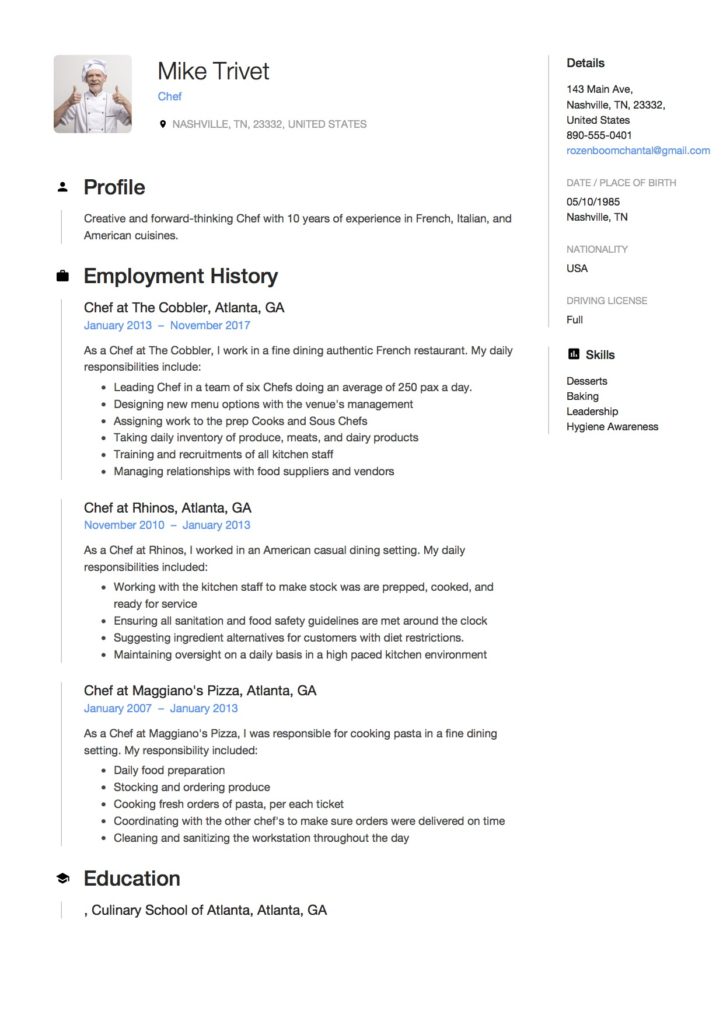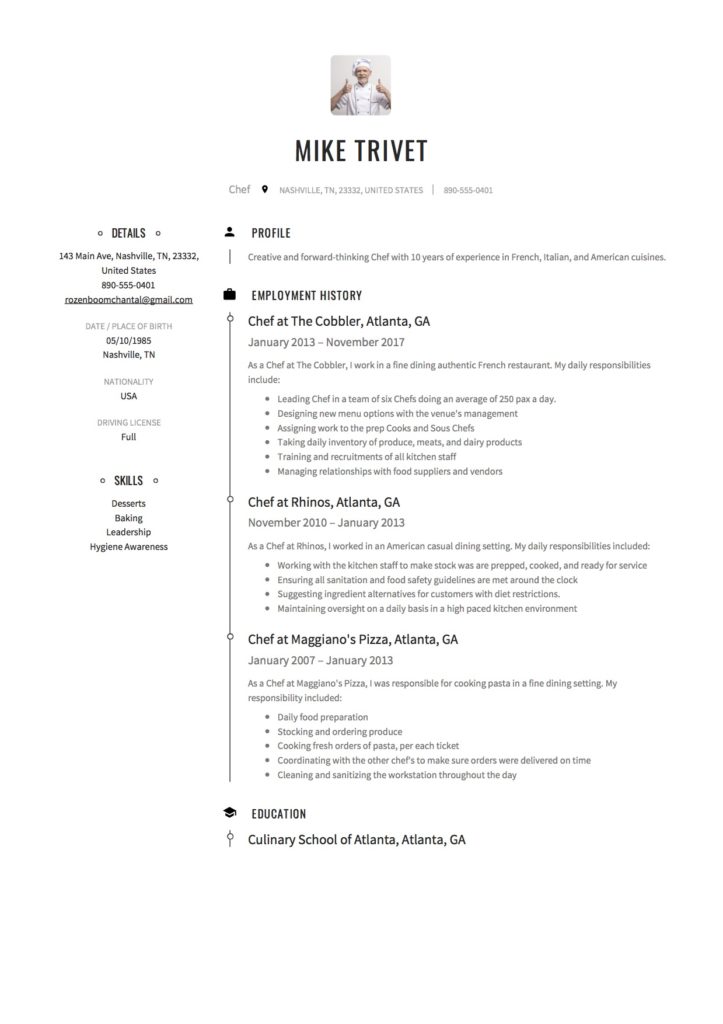
Seeking a new chef position? With hundreds of other chefs looking for a new position daily, you need to make sure your resume will stand out by being both informative and intriguing. It is therefore important to first look at other chef resume sample(s), to see what kind of resumes you need to level.
We have a few impressive resume samples and a step-by-step how-to guide too to help you out. So, let's get you started!
What you can read in this article
Or download these examples in PDF at the bottom of this page for free
Depending on how far along you are in your career, you are going to want to highlight different things. For both beginners and seasoned veterans, it is important to clearly identify the type of restaurants you have worked in. This includes the type of cuisine, for example, American, French, or Italian, as well as the type of service, for example, casual dining or fine dining. This information should be included in both your summary/objective, as well as in each position description. If you aren’t sure what type of service you have worked in, you can review the breakdown below:
Fast Food: Emphasis on the speed of service. This could range from a food cart to a corporate chain. Food is not ordered from a table, but rather from a counter. Examples of fast-food restaurants include McDonald's, Wendy’s, and Burger King. We would call someone preparing food in McDonald's not a chef, but a crew member.
Fast Casual: Slightly higher quality of food than that of a fast-food restaurant. Orders are still taken at a counter, not at a table. The food is prepared fresh in-house daily. Examples of fast-casual restaurants include chains like Chipotle, Moe’s, and Panera Bread.
Casual Dining: Serves mid-range priced foods in a casual setting. Orders are taken at a table by a server. Casual dining restaurants typically have a full-bar. Examples include TGI Friday’s, Cracker Barrel, and Olive Garden.
Fine Fining: Full-service restaurants with dedicated meal courses. Higher-end décor and prices. Often have dress code rules, in addition to strict guidelines restaurant staff to follow.
The other important thing to highlight is any areas of specialty that you possess. Most kitchens are divided into types of food (grill, cold bar, desserts, etc.) so be sure to specify what part of the kitchen you feel most comfortable in.

Remember to use the correct position title when describing your past employment. It is also essential to be clear with employers about the types of positions you are interested in moving forward. Below are the most common chef position titles, including a brief overview of their responsibilities.
Executive Chef: Responsible for directing and overseeing the entire operations of the kitchen. Typically, creates the menu. Manages all kitchen staff, including hiring, training, and scheduling. Controls inventory and relationships with suppliers. Similar titles for this position include Head Chef, Master Chef, and Chef Manager.
Sous-Chef: Second in command, working directly with the Executive Chef. Takes over the main responsibilities when the Executive Chef is off-duty. Supervises the work of the kitchen staff.
Line Cook: In charge of one particular area of the kitchen. Line cooks can be broken down into additional titles, including sauce chef (saucier), break cook (Boulanger), deep fry cook (fruitier), cold food cook (pantry chef), and soup chef (potager). Similar titles for this position include Chef de Partie and Station Chef.
Range Chef: One of the most basic chefs (cook) in the kitchen. Often a recent graduate or someone who is still undergoing training. Typically, works directly under a Line Cook in one specific area of the kitchen.
Contact Information:
Profile:
1 – 3 sentences giving a broad overview of your profession, years of experience in the industry, and specific areas of specialty (ex. Fresh Pasta, Baking, Grill)
Skills Summary/Key Skills:
List of key skills that you possess that are also found in the job posting
Employment History:
Showcase your past places of employment and include a list of your daily responsibilities. If you are new to the restaurant industry, you can add other employment (ex. Sales Executive, Customer Service Agent, etc.) to show you have work experience. If you have been in the industry for a while, only include your cooking experience.
Education/Licenses/Certifications/Relevant Coursework/Training:
List any training classes, food service certifications, and relevant workshops that you have received. It is not necessary to have any kind of diploma or education to work in the food service industry. The exception to this is that some fine dining establishments might require you to have formal training.
Whether you are just starting your career, or are a seasoned veteran, employers are expecting you to be familiar with the basics. To make sure your resume is what employers are looking for, try incorporating these things:
As you become more advanced in your career, employers are also looking for you to do the following things. Advanced chefs, try incorporating these into your resume:

Employers love numbers because it makes your experience feel more tangible. When writing your resume, if you can answer the questions, “How much?” or “How many?”, you should try to include that number.
As a chef, technical skills are the most important, but it is also important to possess some soft skills as well. To show employers that you have the soft skills they are looking for, try to incorporate these into your profile, key skills, and cover letter sections:
Never make your professional experience sound like a passive list of daily tasks. Instead, help potential employers envision you performing the job by using these chef-specific action verbs:
| Prepping | Cooking | Cutting |
| Chopping | Baking | Grilling |
| Sauteing | Cleaning | Managing |
| Completing | Analyzing | Measuring |
| Scheduling | Relaying | Frying |
| Applying | Inspecting | Ordering |

Chef Resume 0.PDF 